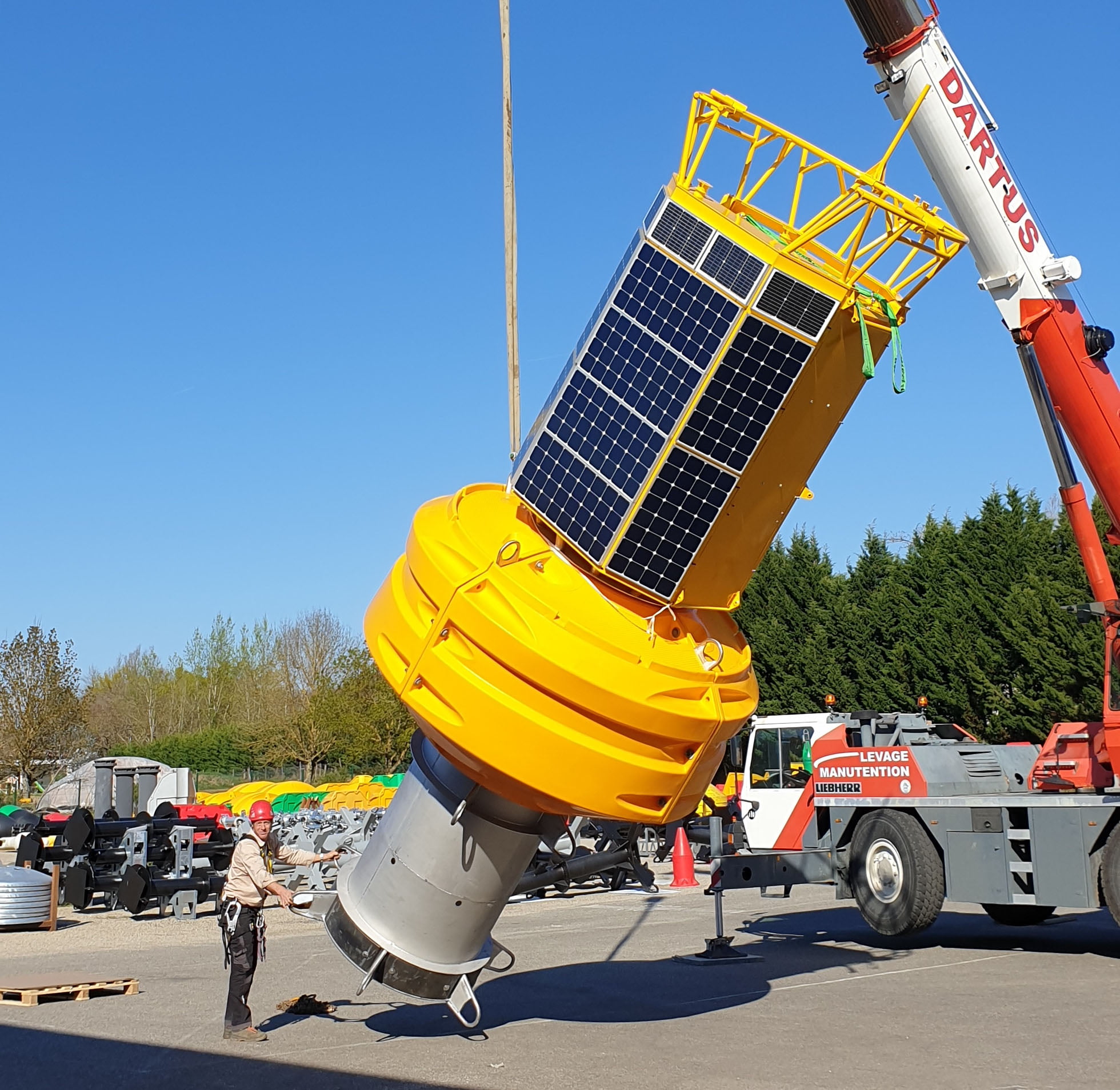Hydrosphere has been providing high-quality, reliable and cost-effective data buoy solutions since it was first founded in 1994.
For our latest project, we worked closely with buoy manufacturer Mobilis to design, develop and supply a new, high-value data buoy for one of our long-standing clients – a security and defence contractor which tests and designs naval systems for the likes of the Ministry of Defence (MOD), Royal Navy and BAE Systems.
A floating power supply solution
The client had been a customer of Hydrosphere’s for approximately 10 years and came to us looking for a new solution to be deployed off the South Coast of England. They were previously using seabed cables to power their application; however, these cables break on a regular basis and are costly to maintain as divers are needed to repair them.
To solve this problem, we worked together with Mobilis to design and develop a floating solution to their power supply requirements. This involved a lot of interaction between us and the client, and we then passed information and design ideas back to Mobilis to ensure the customer got the buoy they wanted.
The project took a couple of years from conception through to completion, with extensive back and forth discussions taking place initially. For example, the client needed to secure funding and the site location changed, which resulted in the power requirement increasing. Once all of the initial details had been ironed out, the buoy was approximately three months in the making.
Not your average data buoy
Data buoys are typically supplied to the UK Met Office and feature a full range of met and wave sensors, which enable meteorological and oceanographic observation or surveillance to take place and data to be reported back via satellite.
Mobilis already offers a selection of standard data buoys which use new technologies and the company’s expertise of integration to provide a platform for hosting a range of instruments. But this buoy was a little bit different and required a high degree of modification. Unlike a lot of competitors within data buoy manufacturing, Mobilis has the ability to do this as customisation is a major part of what they do.
The finished product is a gigantic three-metre data buoy featuring wave and met sensors, two wind turbines, 900 watts of solar panels and a two-tonne battery with a massive capacity of 2,900 amp hours. Definitely not your average data buoy – in fact, we managed to fit six people inside it at the factory acceptance test!
As the buoy had to be completely non-magnetic and capable of supporting a variety of undisclosed devices, we built it around a large central stainless-steel structure with a silent mooring. This central structure houses the very heavy battery low down inside a vented, water-tight compartment to ensure the buoy remains stable. Mobilis carried out all the stability and mooring studies to make sure the mooring and the buoy combination would work well together.
The floats are bolted around the stainless-steel structure – while the tower featuring the turbines, sensors, solar panels and any other instruments is mounted on top. All the solar panels are made from marine grade materials and the electronics in the panels are marinised as well to ensure they are suitable for use at sea and will be able to withstand rough conditions.
If this product proves to be successful, the client will look to deploy the buoy at other sites across the UK. At Hydrosphere, we are also hoping to take on more of these types of projects in the future – collaborating with companies like Mobilis to create bespoke products.
To find out more, please contact sales@hydrosphere.co.uk or call +44 (0)1420 520374.








